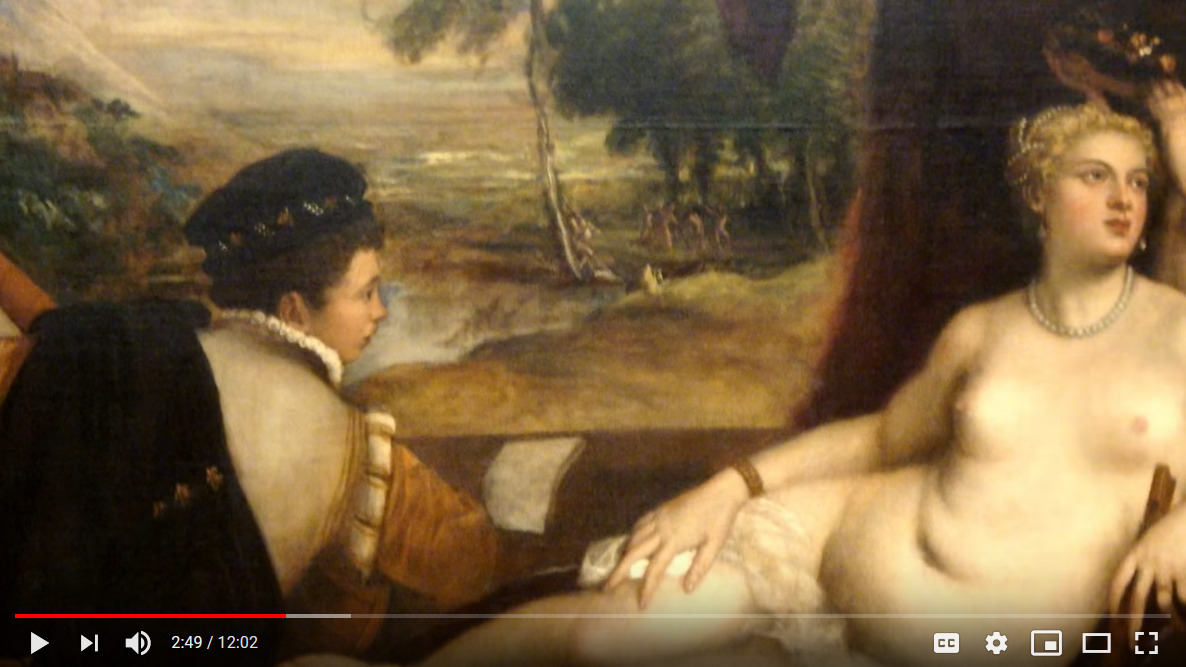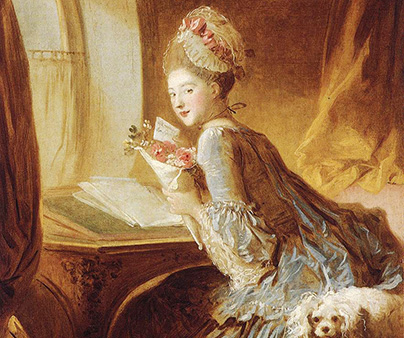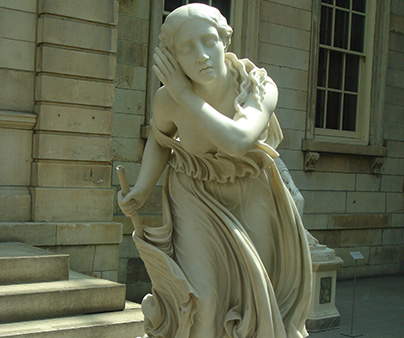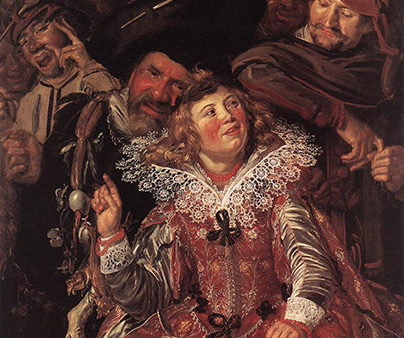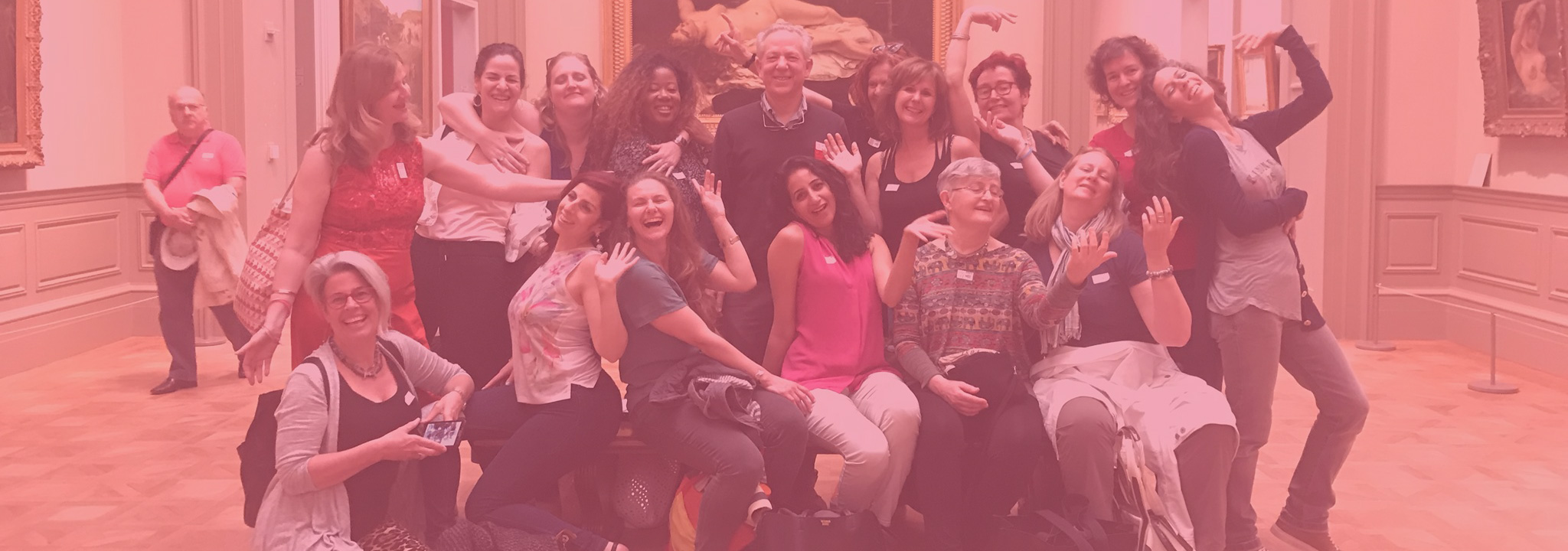
Sexy Secrets of Great Art Youtube Series
Please Subscribe To Our Youtube Channel
Sexy Secrets of Great Art:
Episode 1 – The Birth of Erotic Art
Join Professor Andrew Lear of Shady Ladies Tours for this new YouTube show, “The Sexy Secrets of Great Art,” and find out how much fun—and how intriguing—art history can be. This first episode is about the way artists in the Western tradition used Classical mythology as a way to get away with making sexy pictures. Then the next two episodes will be about the way they managed to make sexy religious art. So come on board—and find out about the side of art they didn’t teach you in Sunday school!
Sexy Secrets of Great Art:
Episode 2 – Bathing Beauties of the Bible
Classical mythology served Western artists from the Renaissance through the 19th century as a giant excuse for painting sexy pictures. But it wasn’t enough for them. They also managed to turn Christianity into a source of sexy scenes. In this episode, we look at the pinups that artists managed to make out of Biblical stories!
Sexy Secrets of Great Art:
Episode 3 – Sexy Saints
In the last episode, we talked about the way Western artists managed to find pinups to paint in the Bible. But they weren’t looking only for female pinups! Religion also provided them with naked men to paint and sculpt, and when they got a chance, they went for it. That is to say, they made every naked man they could sexy–generally in a clearly homoerotic way–and that included King David, several saints, and amazingly, even Jesus Christ. Watch this episode to find out!
Sexy Secrets of Great Art – Episode 4: Unhung Heroes
Learn about the fascinating history of the male penis in art on this fun and interesting 75 minute Zoom tour with Professor Andrew Lear!
Nowadays people seem to consider the size of certain male body parts terribly important. The subject even came up in the presidential campaign, as absolutely nobody has forgotten, and ads about whether “size matters” are a dime a dozen. And yet when we go to the art museum, the guys without clothes are distinctly below average real-life size.
Have you ever wondered why that is? Were men really smaller once upon a time? Or did they prefer it for aesthetic reasons? Some other reason? Ever since Professor Lear was interviewed on this very subject on NPR’s Studio360, , people have been asking us to give a tour about it, a tour that explains why the world’s art museums are full of unhung heroes.
So here it is. On this fun and informative Zoom tour (75 minutes, with Q&A) follow the theme of the naked male around the museum. Learn about the ideals of Greek culture and how they have influenced the Western artistic tradition. And discover the contrasting cases as well—cases that exaggerate the other way…. You’ll come away with a whole new understanding of art, and maybe even of size.
Private Tours Available For Groups, Corporate Events & More!
Fragonard The Love Letter 1770s
Fragonard seems to have made this painting as a sample of his work for a royal mistress. It is typical of 18th century French art of sexy, humorous genre scenes were common. A woman has received a bouquet of pink roses—the flower of passion in the 17th and 18th centuries. As the dog’s raised ears show, the woman is looking not at the viewer but at someone else in her scene, presumably the man who brought her the flowers. Her expression is coy, but she certainly does not seem displeased by the present.
Randolph Rogers Nydia, the Blind Flower Girl of Pompeii 1854
Nydia is a character from Bulwer-Lytton’s novel, The Last Days of Pompeii, who attempts to help her friends escape the eruption. The sculpture tells her story in a programmatic way: her closed eyes represent her blindness, her cupped hand the fine hearing that allows her to hear the volcanic rumblings; her walking stick tells you what she is doing, and the Corinthian capital at her feet how it will end. She is an exciting figure, both admirable and pitiable. One detail, her bared right breast, does not derive from the novel, but it undoubtedly accounted for some of her popularity.
Frans Hals. Shrovetide Revelers. 1617
This painting of a Mardi Grad party (note the beads) features three people the foreground: a “maiden”—actually, a boy, as his Adam’s apple, scraggly hair, and stubby fingers reveal— dressed in an elegant brocaded gown and two men representing traditional Dutch clown figures. At this time, boys still played women’s roles in the theater, and this could be a boy actor; perhaps he is wearing a queen costume, which would explain his commanding gesture. The two men are on intimate terms with him, and the one on his left is making an obscene gesture, indicating a desire to know him even more intimately.



